Blog & Latest Updates
Fly Fishing Articles
Insects by Common Name


Heptagenia pulla (Golden Dun) Mayfly Nymph Pictures
Classification
Kingdom
Animalia (Animals)
» Phylum
Arthropoda (Arthropods)
» Class
Insecta (Insects)
» Order
Ephemeroptera (Mayflies)
» Genus
Heptagenia
» Species
pulla (Golden Dun)
This specimen is interesting because Heptagenia pulla has not been reported from Washington or neighboring states (Saskatchewan is the closest), yet the distinctive key characteristics are clear.
It keys to the genus Heptagenia because the tarsal claw (Tarsal claw: The claws at the tip of the tarsus, on an insect's "foot.") has a single basal (Basal: close to the base; root or beginning) tooth, and the gills on segment 7 have fibrils.
For the species key:
1. The left mandible (Mandible: The paired jaws of an insect which are used for grabbing food, located immediately behind the labrum.) is planate (fairly straight-edged) whereas the right mandible (Mandible: The paired jaws of an insect which are used for grabbing food, located immediately behind the labrum.) is angulate (has one sharp turn on the edge).
2. The labrum (Labrum: The platelike structure forming the roof of the mouth of insects; the upper lip.) is much wider than long.
3. There's a thin light-colored streak lateral (Lateral: To the side.) to the eye on the head.
This mayfly was collected from the Yakima River on April 9th, 2021 and added to Troutnut.com on April 12th, 2021.
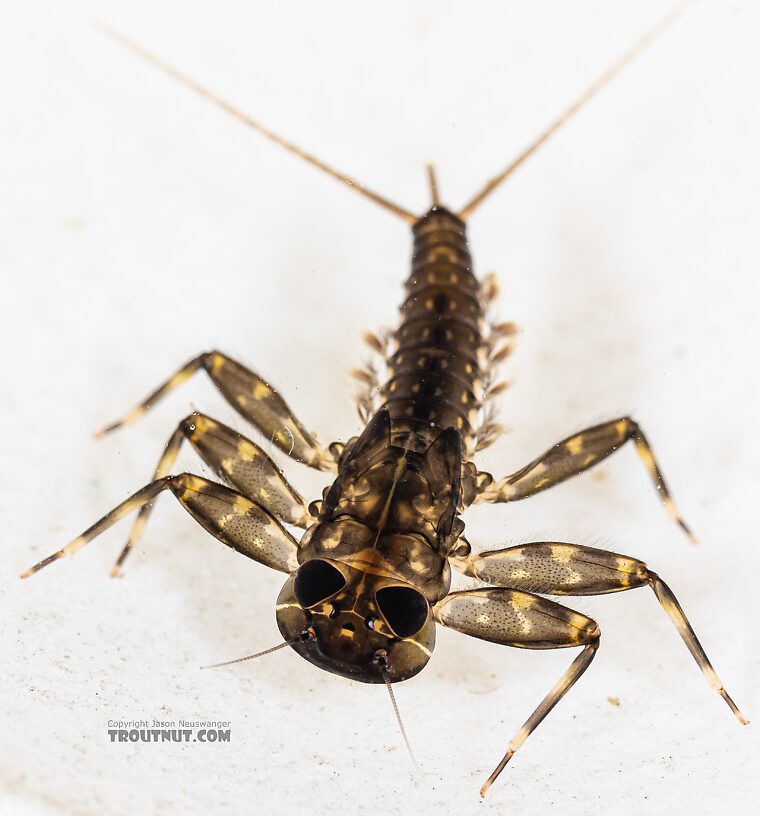
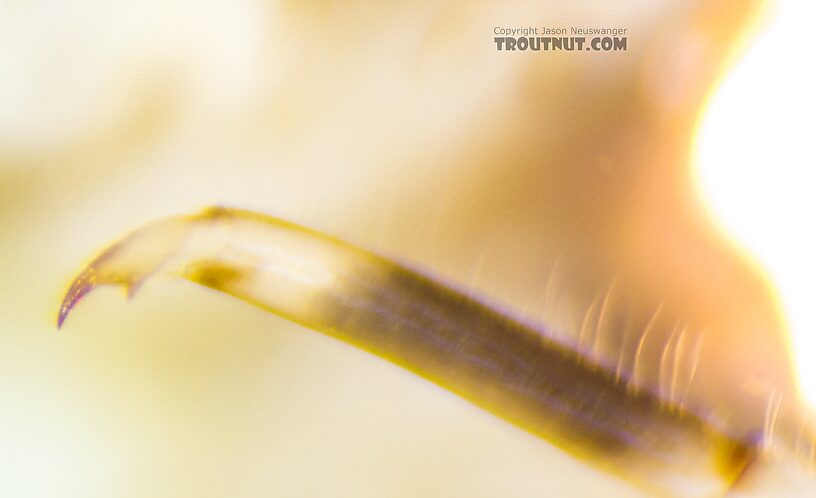
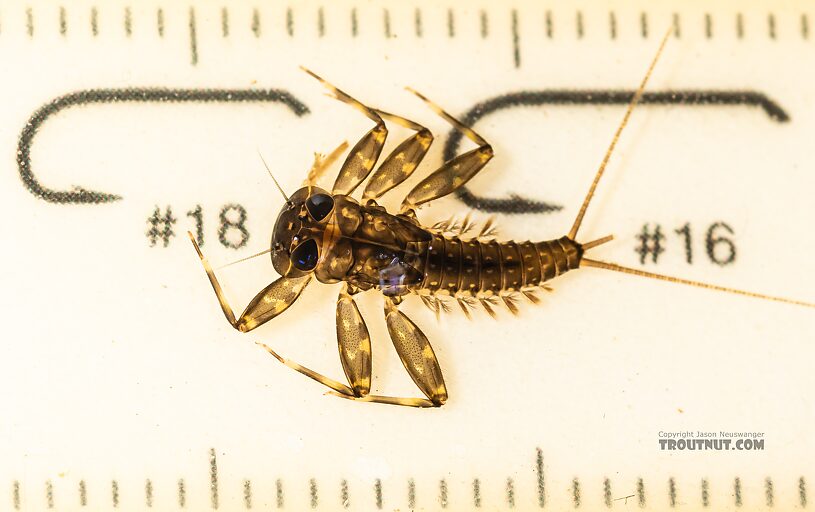
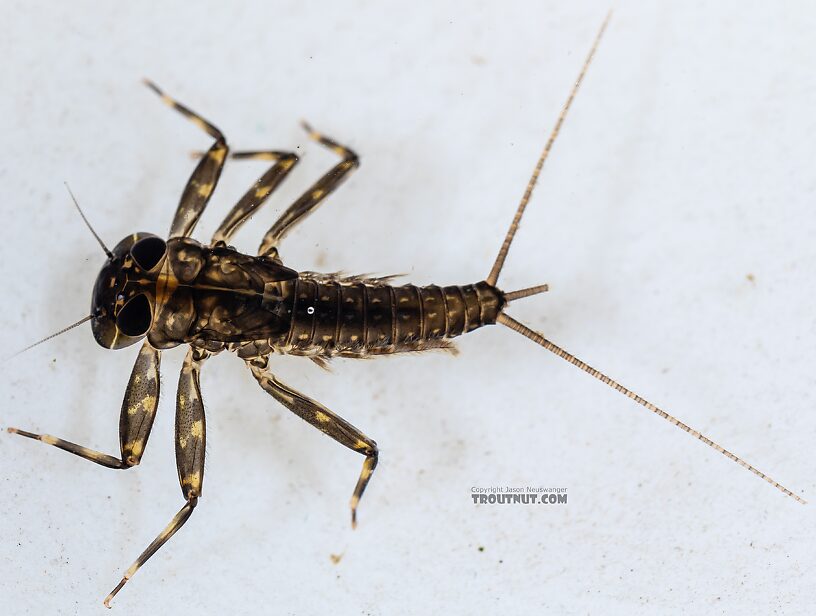
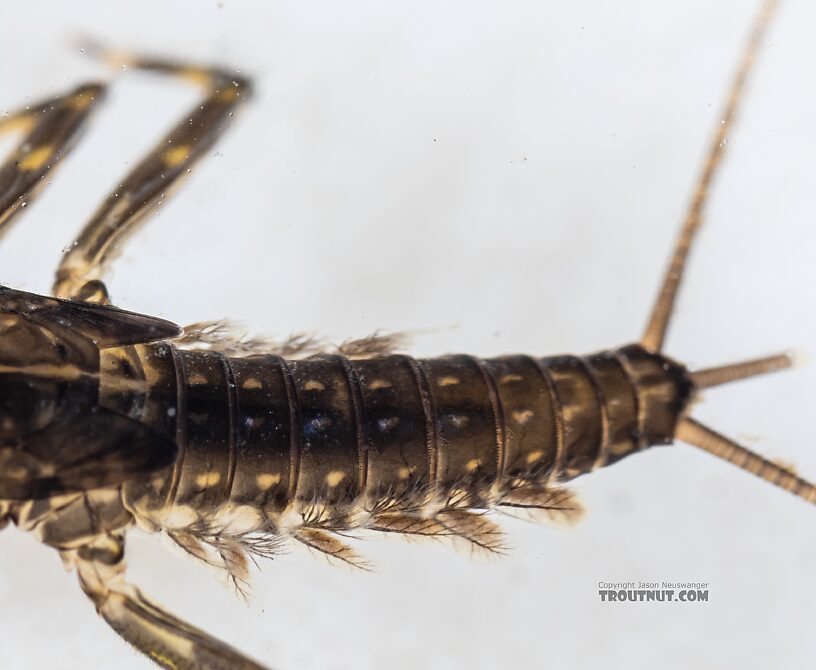
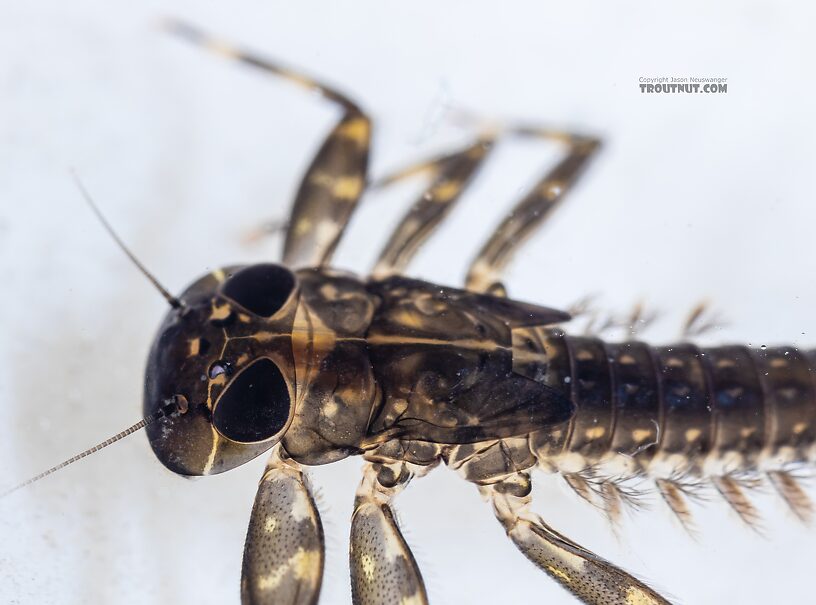
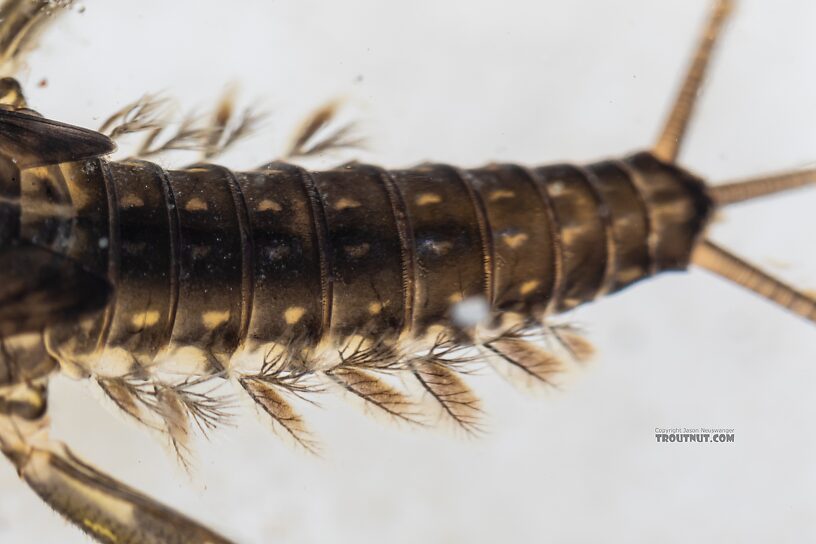
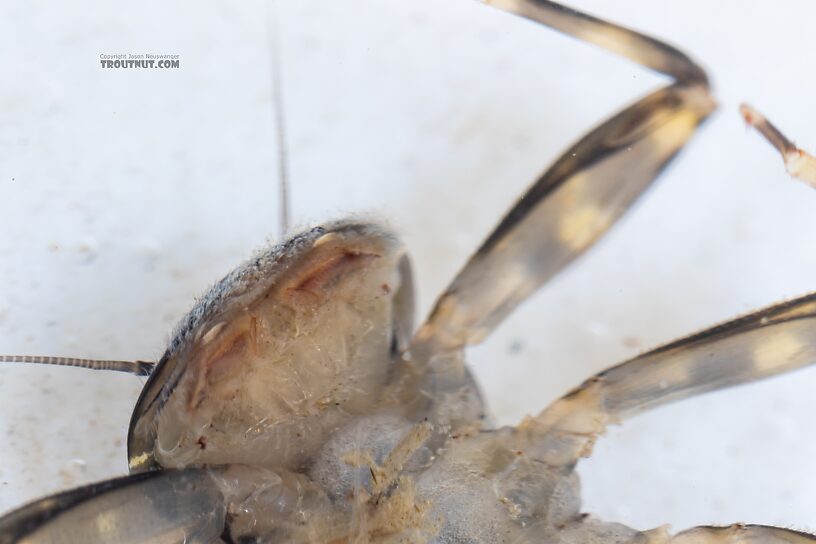
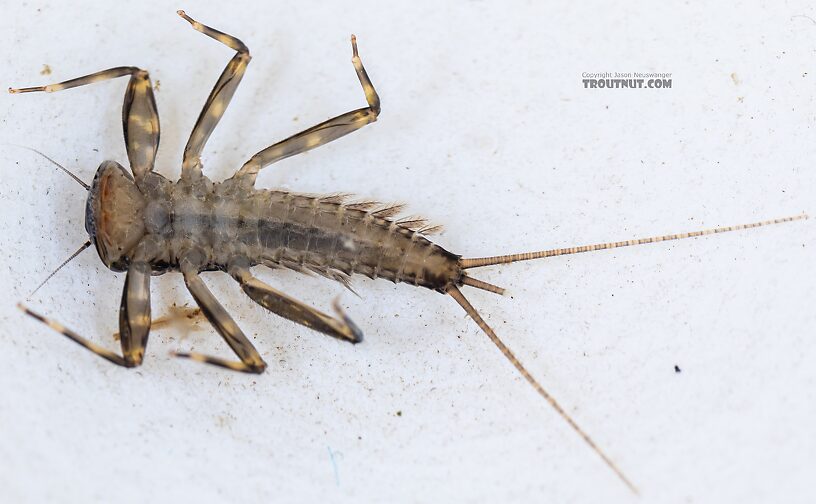
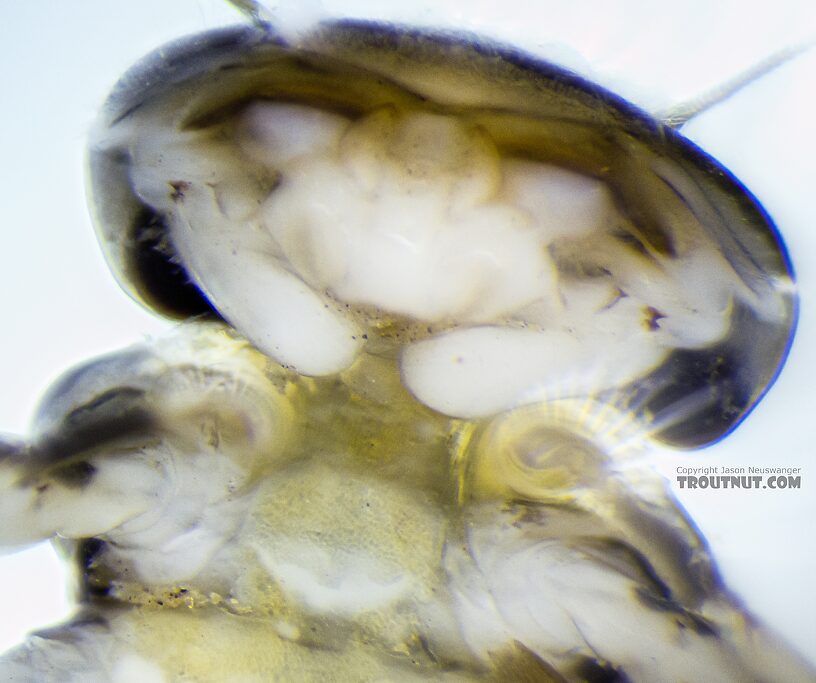
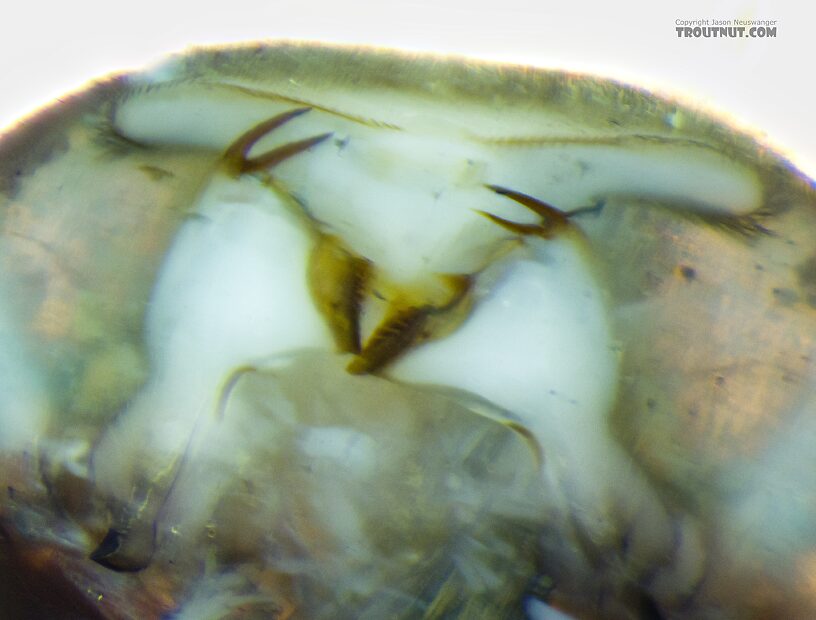
Closeup of the mandibles with the labium removed, showing the asymmetry (straight edge on the insect's left side, angled on its right) that helps diagnose the species.
Start a Discussion of this Nymph:
Top 10 Fly Hatches
Top Gift Shop Designs
Eat mayflies.
Top Insect Specimens
Miscellaneous Sites
Troutnut.com is copyright © 2004-2024 Jason
Neuswanger (email Jason). See my FAQ for information about use of my images.
 privacy policy
privacy policy
